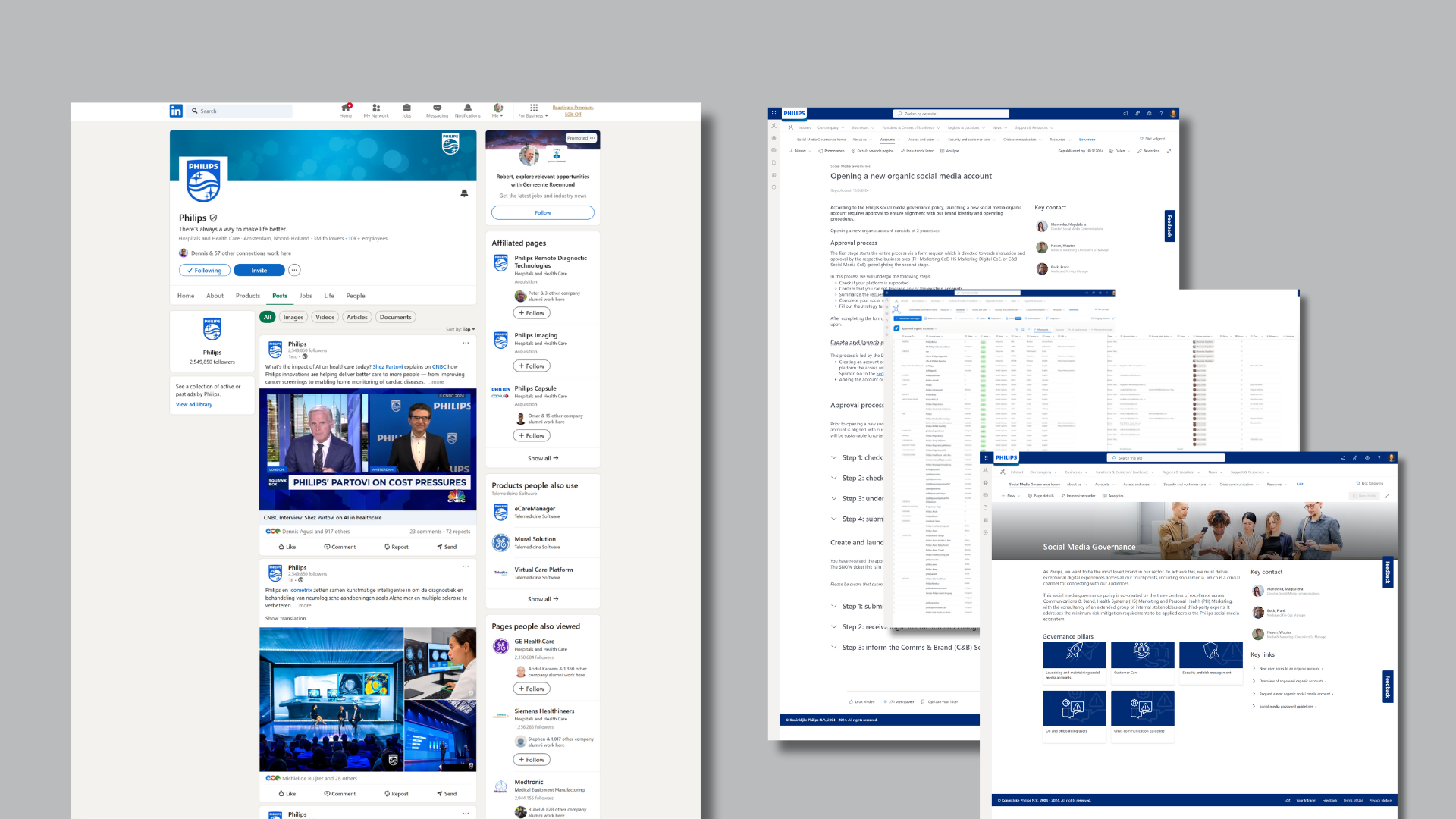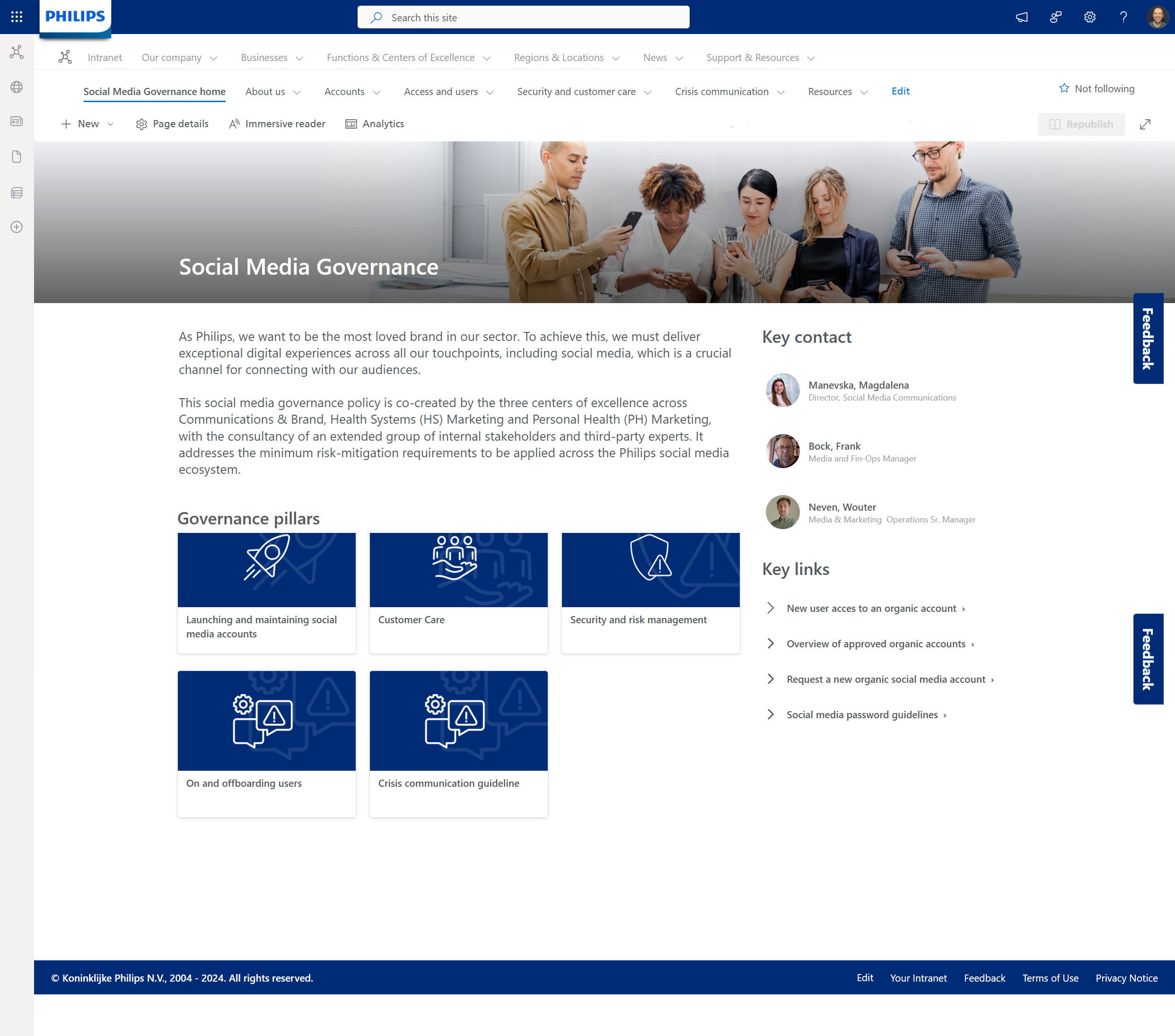Clean up and govern Philips' social media accounts

Managing social media for large corporations can be overwhelming, especially when the number of accounts grows into the hundreds or even thousands. During my time as senior project manager at Philips, I led a social media clean-up and governance project that significantly reduced account sprawl and improved overall security and efficiency. Here's how we achieved it and how you can apply similar strategies in your organization.
step 1: audit your current social media landscape
the first step is to perform a comprehensive audit to understand the full scope of your current social media presence. this involves identifying all existing accounts across platforms, documenting the owner, geography, and business area for each account, and assessing account activity and relevance. during the Philips project, we discovered nearly 1,600 accounts, many of which were inactive or duplicated.
step 2: define strategic criteria for active accounts
once the audit is complete, it's important to define what a "fit-for-purpose" account looks like. this involves ensuring alignment with the brand's communication strategy, evaluating audience relevance and engagement potential, and meeting security and compliance requirements. we established clear guidelines that helped reduce the number of accounts by over 50% to a more manageable 785 accounts.
step 3: create a central governance hub
a governance hub acts as a single source of truth for managing social media. it should include a master database of all approved accounts and their owners, guidelines for account creation and management, security best practices, and protocols for user permissions and access reviews. at Philips, we developed the "social media governance hub" as a user-friendly resource accessible to all relevant teams.

step 4: implement a standardized approval process
it's essential to establish a clear process for creating new accounts and managing existing ones. our approach included a formal request process for new accounts, a quarterly audit of account permissions, and an annual audit of organic accounts. this framework ensured we maintained control while allowing flexibility for new strategic needs.
step 5: plan for ongoing maintenance and accountability
social media governance isn't a one-time task. regular reviews and a cross-functional team are necessary to oversee long-term success. establishing a social media council with representatives from key departments, keeping the governance hub updated, and providing periodic training for account managers are critical steps.
step 6: crisis management integration
finally, a robust crisis management protocol should be incorporated to handle potential issues effectively. at Philips, we updated our crisis protocol with a social listening overview and a response handbook with a clear escalation process.
results and impact
by simplifying and centralizing governance, we reduced Philips' social media presence by 50%, improved security with consistent account oversight, and enhanced brand consistency across all channels.
key takeaway: social media governance is not about restriction but creating a secure, efficient framework for meaningful engagement. if you're managing a large organization's online presence, consider starting with an audit and building a governance hub to ensure long-term success.
